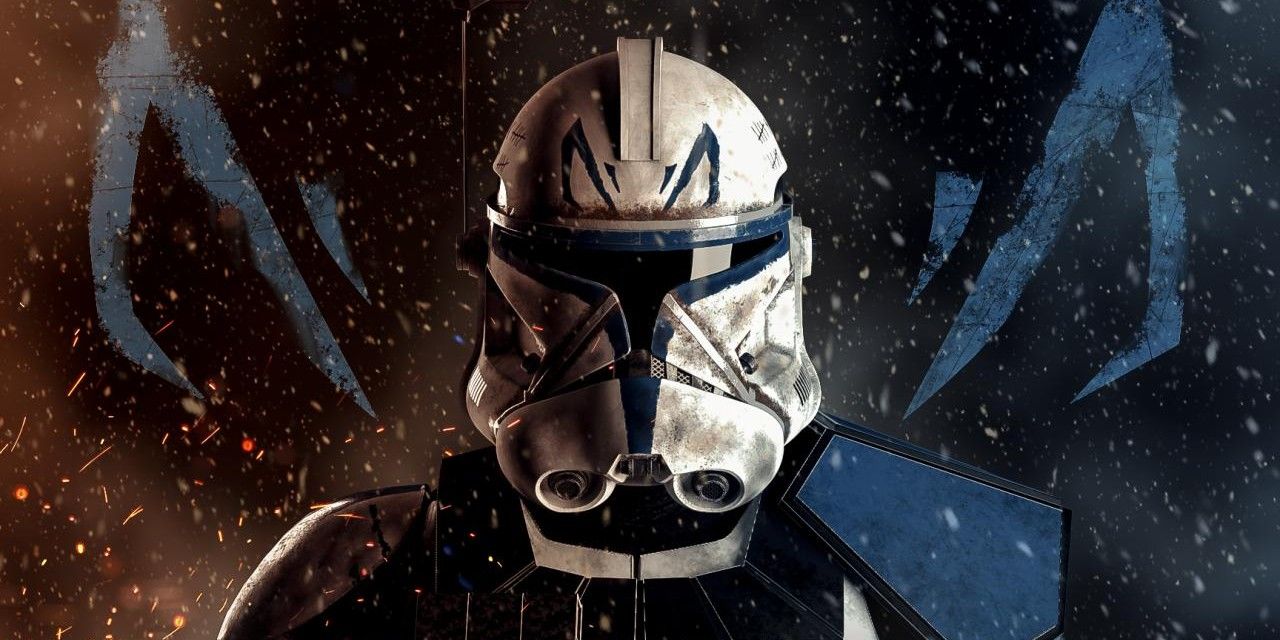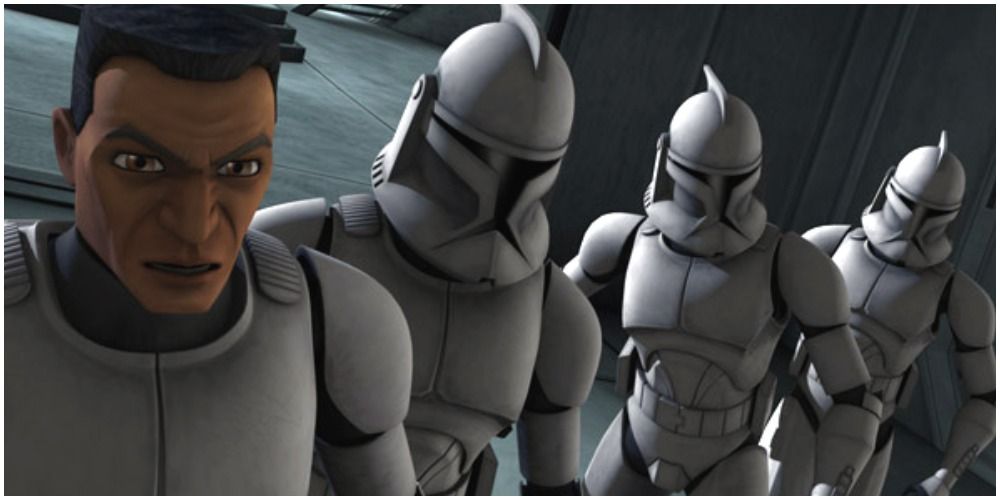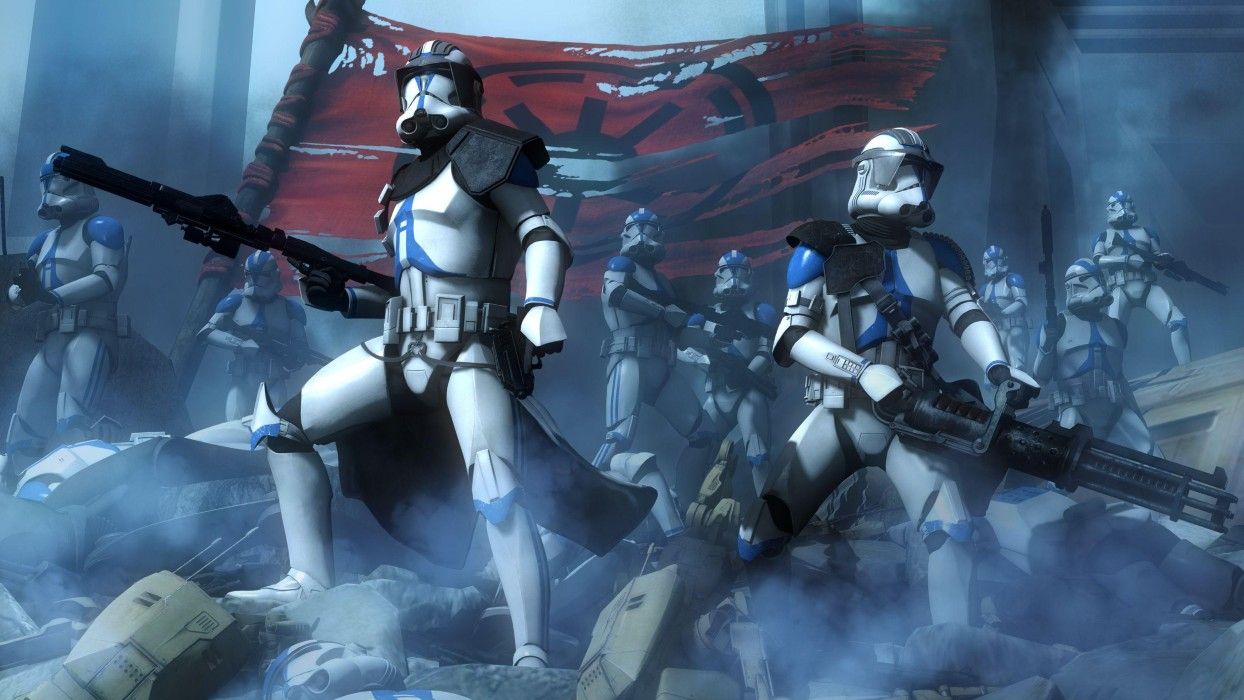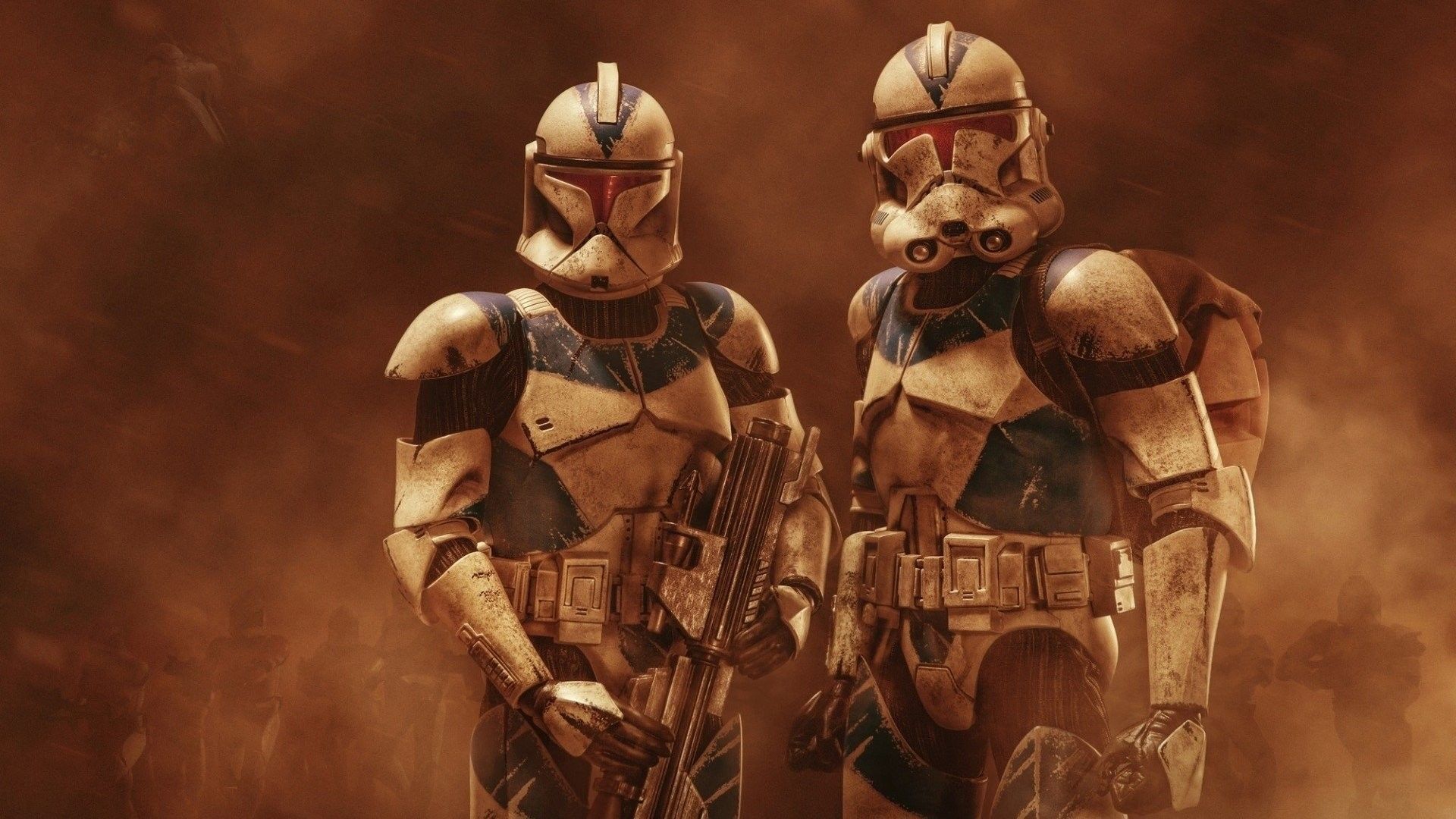In Star Wars, the Jedi might have been the military commanders during Clone Wars, but it was the clones themselves who were the symbol of the Grand Army of the Republic. However, as the Clone Wars progressed, the clone troopers moved from Phase I to Phase II armor, which resulted in them looking much different from how they first appeared at the First Battle of Geonosis.
But which set of armor was better, and what characterized and differentiated Phase I armor from Phase II?
Star Wars Phase I Clone Trooper Armor, Explained
At the request of Darth Tyranus, the Kaminoans used Jango Fett as the template for the Grand Army of the Republic. Because of this, they also used Jango’s Mandalorian armor suit as the basic design for the clones’ armor, which is where the base design of the Clone Trooper Phase I armor comes from.
Since the clones were all based on a single template, they all had the exact same height, weight and build. This was convenient and cost-efficient, because it allowed clone armor to be mass-produced, with each set containing the same basic features. The armor was made out of thick, white plastoid. Notably, their helmets included a life-support system, a tracking device and a commlink. In Phase I, extra features such as macrobinoculars and rangefinders required additional attachments.
The most important function of Phase I armor was that it was pressurized, which meant that a clone trooper could breathe in the vacuum of space. Star Wars: The Clone Wars Season 1, Episode 2, “Rising Malevolence,” showcases this when Jedi Master Plo Koon is stranded in an escape pod with a few surviving clone troopers after being attacked by the Separatist army. Since the episode is set early in the Clone Wars, the troopers are able to exit the pod and defend themselves from the attacking droids.
Star Wars Phase II Clone Trooper Armor, Explained
Phase II armor was implemented roughly a year into the Clone Wars and slowly phased-in after obtaining the approval of ARC troopers like Jesse. Although Phase II armor is still made of the same white plastoid, it's recognizably different from the Phase I armor. The Phase II helmet crest, for example, does not come to a point in the rear, and there is an upgraded breath filter and annunciator on the front. However, unliked Phase I armor, Phase II armor was not pressurized and so required an external respirator in low-oxygen environments.
In addition to the helmet, another difference in the Phase II armor is the overall functionality. When the Kaminoans designed the Phase I armor, they were not overly familiar with the physiology of humans, so the armor was uncomfortable. As a result, the cloners sought to introduce improvements in the Phase II set of armor. Accordingly, they designed the Phase II armor to be lighter, better fitting and offer more protection.
Another change in Phase II armor was the ability to customize the armor for specialized clones and their various missions. As the war spread across the Galaxy to different worlds, clones were sent into new environments, and they needed their armor to be able to protect them accordingly. This meant that the armor was more expensive than the Phase I model.
Which Is Better: Phase I or Phase II Armor?
Clone troopers often viewed themselves as expendable for the sake of the Republic. They were created for the sole purpose of combat. However, as the war progressed, the Jedi began to realize that clones were living beings with individual personalities, regardless of how they were created. Steven Barnes' 2004 novel, The Cestus Deception, shows how Jedi value the clones as individuals. The book notes, “[It] didn’t matter that they’d all begun life in identical artificial wombs. In millions of tiny ways, their conditioning and experience were different, and that created differences in both performance and personality.”
Phase I armor was mass-produced for an army bred to fight and die. Phase II armor, even though it was more expensive, offered countless benefits for the Republic. It offered a sense of individuality to each trooper because each suit could be specialized if needed, and it was more comfortable for the wearer. In the end, Phase II armor represents how clones were gaining status in the eyes of the Republic and, more specifically, the Jedi as they became comrades while fighting alongside one another.




